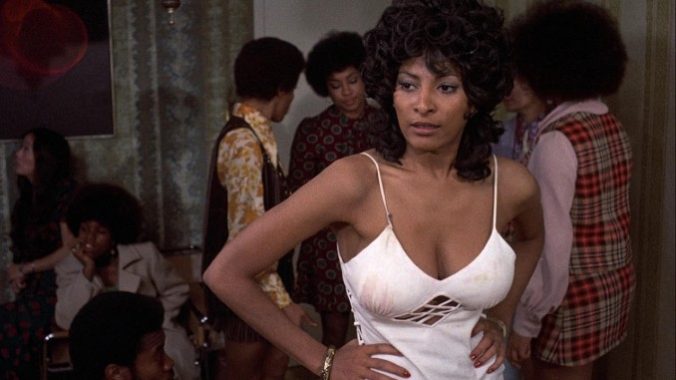50 Years Ago, Pam Grier Made Herself into a Blaxploitation Action Star with Coffy

Somewhere between Wednesday, June 13, 1973 and Friday, June 15, 1973, the Pam Grier movie Coffy was released in theaters all around the country. In his Chicago Sun-Times pan, Roger Ebert opened up his review by calling it “a marriage between a soft-core flick and a Blaxploitation movie.” However, he could not stop gushing about Grier and her, um, assets. (“She’s beautiful… And she has great cleavage, too.”) Over at the New York Times, A.H. Weiler dropped a quickie review the day after it came out. The reviewer mostly summarized the movie and said that Grier “is tougher than the opposition.”
Filmed in a mind-blowing 18 days on a $500,000 budget, this urban crime thriller marked the beginning of Grier’s ‘70s reign as a Blaxploitation action star. She plays Flower Child Coffin (“Coffy” for short), an L.A. nurse who goes on a killing spree, blowing holes in the junkies and pushers who sell heroin to little kids—like her 11-year-old sister, who’s resting in a juvenile rehabilitation facility. When a kind-hearted cop (and former flame of Coffy’s) gets beaten to the point of brain damage by thugs, after he refuses his partner’s offer to start accepting bribes, she decides to go after bigger fish.
The Afro-ed Coffy infiltrates the stable of flamboyantly-dressed pimp King George (Robert DoQui) by perming up her hair and pretending to be a Jamaican escort named Mystique. (The other ladies contemptuously call her “Miss Stick.”) She does this to get closer to upper-class drug peddlers like Arturo Vitroni (Allan Arbus), a Mafia don whose kink is degrading darker-skinned beauties.
Coffy wasn’t out to win Oscars. When it isn’t racist rants from repugnant characters or monologues from Grier about drugs in the Black community, a lot of the dialogue consists of characters spouting exposition to each other. And most of the performances are downright laughable, especially from the actors who play the skeevy bad guys. (Grindhouse heavy Sid Haig chews the scenery of every scene he’s in as Vitroni’s main goon.) Nevertheless, this disreputable B-movie (with a funky-as-hell soundtrack provided by soul/jazz great Roy Ayers) won over Black audiences. It grossed $4 million and made a stone-cold heroine out of Grier. She plays the titular temptress as a modern-day Medusa, enticing clueless men with her bosomy, drop-dead-gorgeous ways until it’s too late. You do get a kick out of watching one racist asshole after another fall under her spell—and eventually getting their brutal comeuppance.
Coffy marked the third collaboration between Grier and veteran exploitation filmmaker Jack Hill. When American International Pictures approached Hill about doing “a Black woman’s revenge story,” the pale-faced Hill didn’t know how to make that happen. Thankfully, he had a secret weapon in Grier, whom he directed in such women-in-prison flicks (a genre where Grier was becoming a regular) as The Big Doll House and The Big Bird Cage.
-

-

-

-

-

-

-

-

-

-

-

-

-

-

-

-

-

-

-

-

-

-

-

-

-

-

-

-

-

-

-

-

-

-

-

-

-

-

-

-








































